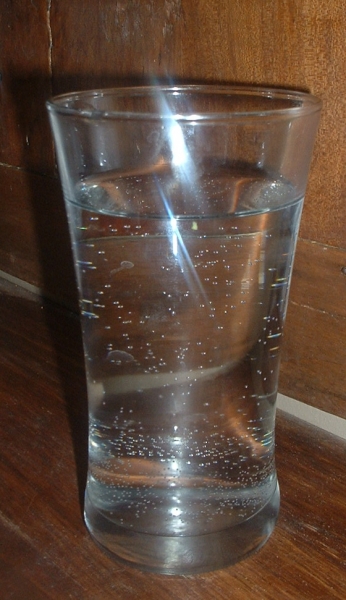

- Tiny bubbles in tap water install#
- Tiny bubbles in tap water plus#
- Tiny bubbles in tap water professional#
Tiny bubbles in tap water plus#
What causes this cloudiness? And more importantly, is cloudy, milky water safe for drinking? We’re going through all this plus more down below. Plumbing Today is a Florida plumbing contractor and has locations in Sarasota, Orlando, Tampa, & Naples and serves the surrounding areas.Ever turned the tap on to wash some dishes only for what looks like diluted milk to come pouring out? That’s definitely not what you want when turning the tap on.
Tiny bubbles in tap water professional#
Want to know what’s making your faucet water cloudy? Contact us for a free water quality test. We’ll tell you if anything harmful is in your water and give you professional advice on water quality solutions. Need your water tested? Ask a Florida plumber
Tiny bubbles in tap water install#
Higher than 28 mg/L, you should install an aeration system.Between 7 mg/L and 28 mg/L, you should install a vented well cap.Below 7 mg/L, you should continue routine testing, but no action is necessarily needed.If you think you have methane gas in your drinking water, you’ll want to have a professional test the water to measure the exact methane gas levels.Īccording to the Penn State Extension Water Quality Department, if a water test confirms that methane levels in your water is: Over 28 mg/L requires immediate action (to lower methane levels).Between 10 mg/L and 28 mg/L should be regularly monitored.Department of Interior, methane levels in drinking water: This gas is colorless, odorless and tasteless. Methane is a natural gas that can occur naturally in well water. Signs you have methane gas in your faucet water: For more severe cloudiness, you may need to use a multi-level media water filtration. Use a standard cartridge or bag water filter for less severe cloudiness. So, what exactly is “TSS”? TSS stands for total suspended solids and refers to all the extremely small solids in water that stay “suspended” in the water (don’t ever settle to the bottom).Īlthough the Environmental Protection Agency (EPA) doesn’t provide a standard for TSS measurement in drinking water, unusual cloudiness due to TSS can lead to bacteria growth.




 0 kommentar(er)
0 kommentar(er)
